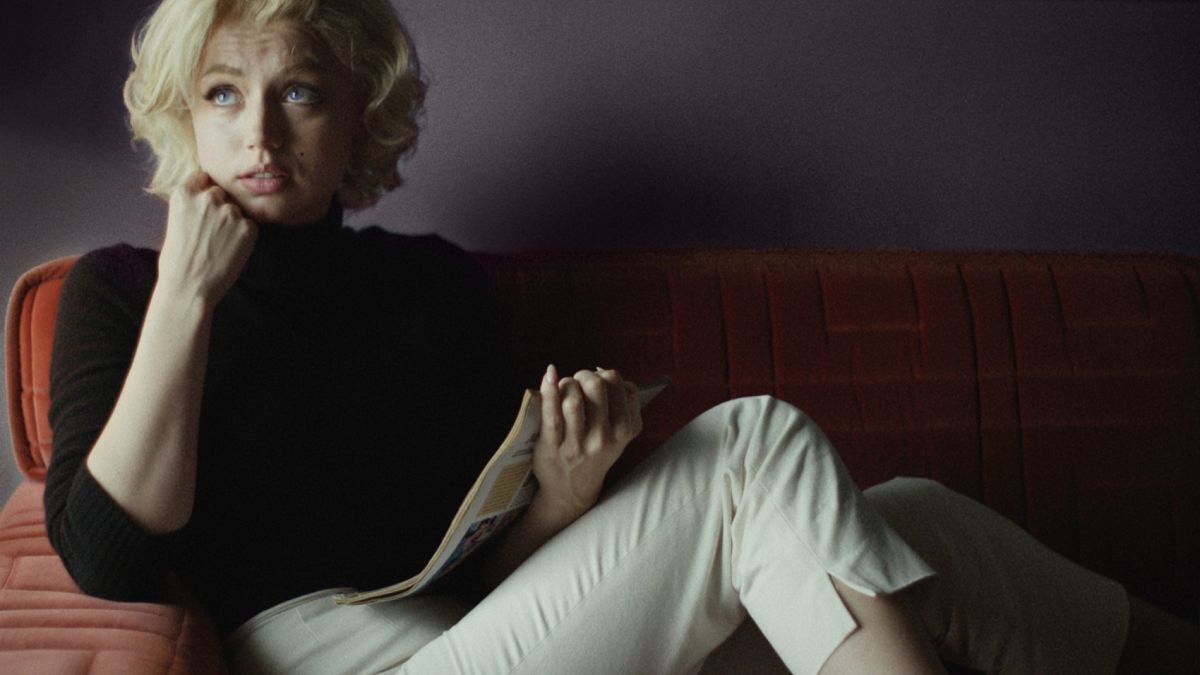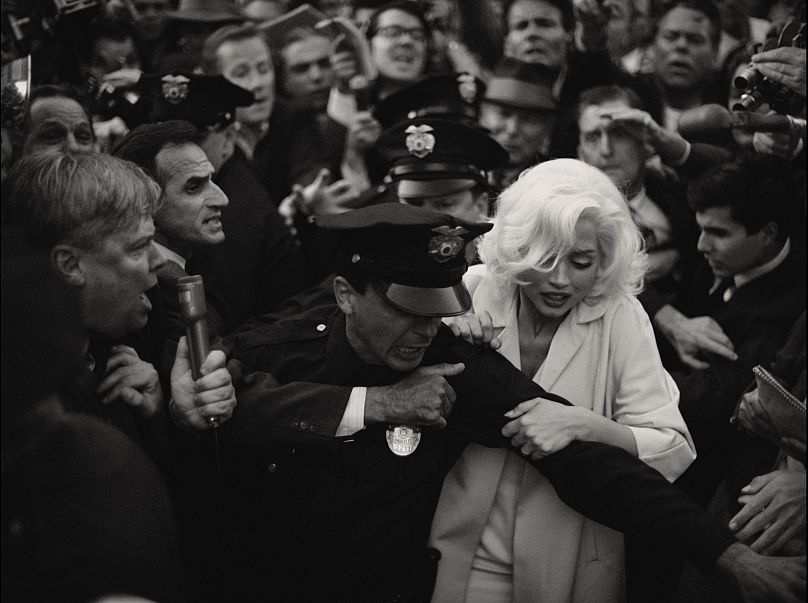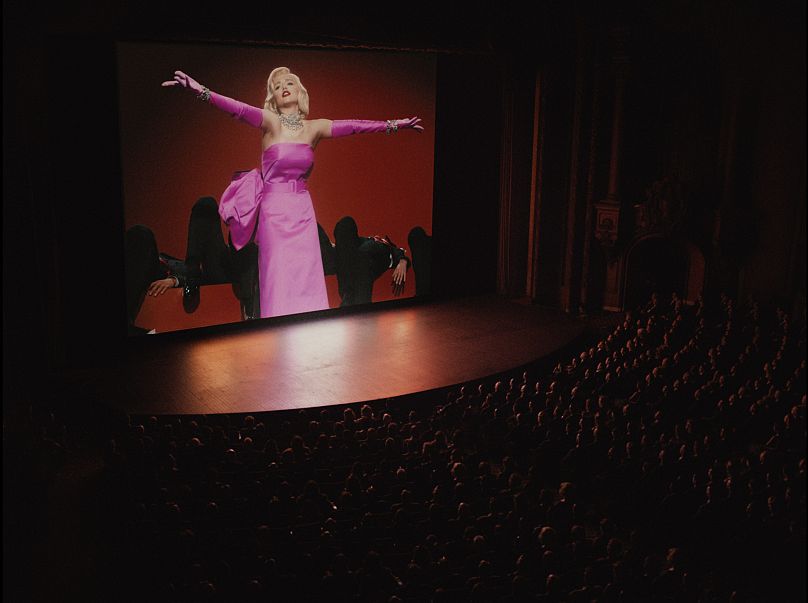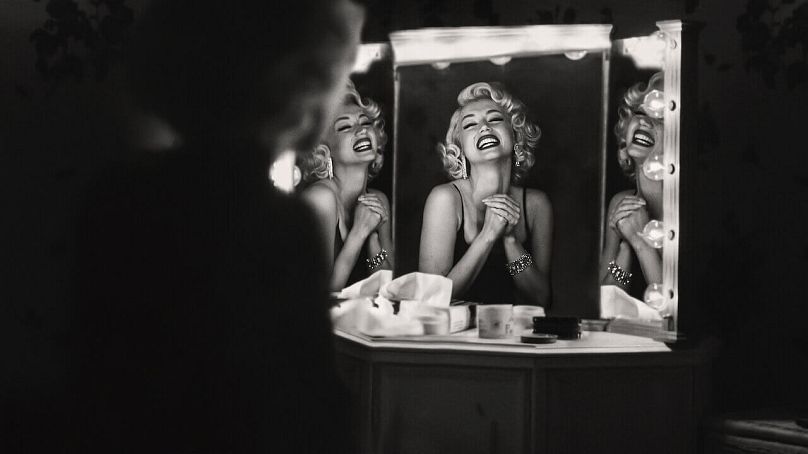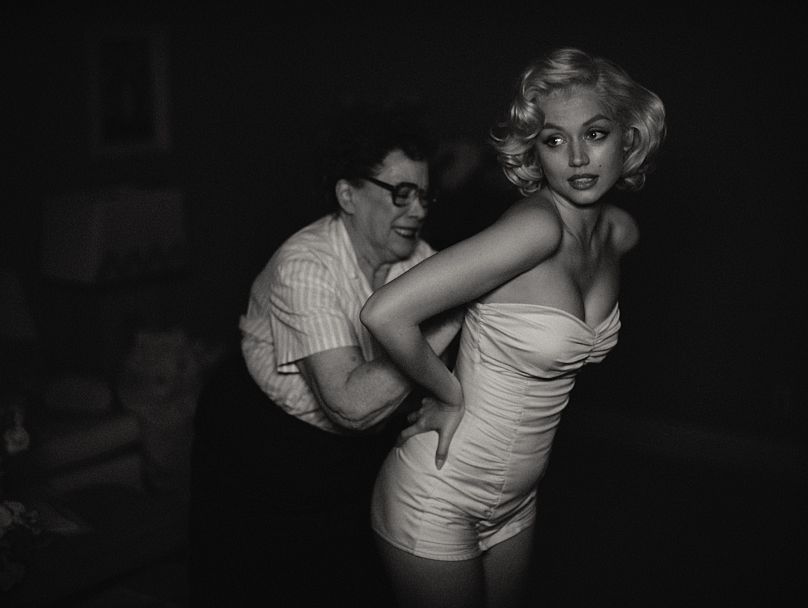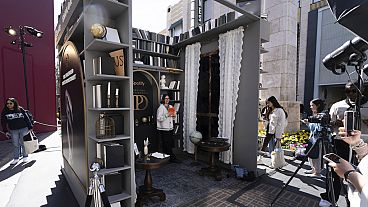Brace yourselves for 'Blonde', a singular vision of the life of Marilyn Monroe that won't leave anyone indifferent.
With countless artforms having dissected the life of Marilyn Monroe, each offering their vision of one of the world’s most enduring icons, it’s hard to understate the burden of expectation when it comes to a new, high-profile offering. How does an artist even begin to approach the figure and her multitudes? In Andrew Dominik’s case, by eschewing all expected biopic conventions and giving audiences exactly what they wouldn’t expect.
The New Zealand-born filmmaker’s long-gestating Blonde is a singularly raw account of Monroe’s life that plays out like a surreal and fragmented fever dream. If the haunting last shot infers anything, it is that his film is the distressing death spasm of Norma Jeane / Marilyn Monroe’s revived memories flashing before her eyes prior to her final breath.
A line uttered by Monroe halfway through Blonde takes this fragmentation to another level. “In the movies, they chop you to bits,” she says. “It’s like a jigsaw puzzle.”
This refers to the editing process of a movie but also reflects how Blonde has been constructed: a purposefully fragmented chronicle of an equally fragmented psyche, the structural embodiment of an identity fashioned by a system that pushes its creation to extremes through an insurmountable catalogue of cruelties.
It begins with a traumatic childhood memory of young Norma Jeane (Lily Fisher) and her time with her psychologically tormented mother Gladys (Julianna Nicholson, in a show-stealing performance). This chapter is centered around an absent father figure which will go on to shape the young girl’s future relationships with the fatherly substitutes she calls “daddy”. From then, the film’s wandering structure parachutes the audience in various moments of Norma Jeane's (Ana de Armas) life, including her marriages to the abusive Joe DiMaggio (Bobby Cannavale), the broody Arthur Miller (a perfectly cast Adrien Brody) and the affair with serial presidential philanderer JFK (Caspar Phillipson) – all beautifully-filmed recreations which invariably manoeuvre towards the horrific.
Throughout, Dominik employs a series of filmmaking flourishes that oscillate between dazzling and chaotic showboating: the switching of aspect ratios and perspectives, black-and-white-then-colour transitions, blurred images, as well as moments that metatextually call attention to themselves and remind the audience that they are watching a film.
The cinematography is undoubtedly one of the film’s greatest strengths, with the camera movements, lush lighting and increasingly eerie score by Nick Cave and Warren Ellis conspiring to destabilize viewers by offering gorgeous scenes that become painful to witness. This sensory tug-of-war births a very public peep show that turns the camera on the audience once more, casting them as paparazzi surrogates. It’s this invasiveness of the camera’s glare which creates conspiracy of vision – an uncomfortable lionising of Marilyn that makes viewers feel like culpable participants in the systematic dismantling of a life through insatiable ownership of an exploited woman.
The camera even goes so far as to give not one but two POV shots from Norma Jeane’s cervix during two abortion scenes. By the time the second one comes, there is definite discomfort that creeps in, giving the impression that Dominik’s repeated angle is crass and indefensible. However one feels about these scenes – as well as sequences featuring a talking CGI foetus – the director’s point is always clear. His film is one which slaps the audience in the face with the fetishization she endured.
You wanted the life of Marilyn Monroe? Well here it is. Cervix and all.
As impressive and alienating-by-design as the form and style is, _Blonde_’s unquestionable high point is Ana de Armas.
Her bewitching turn is not only convincing and emotionally engaging, but it borders at times on an “uncanny valley” feeling that will make you question whether deep-fake technology might have been used. Spoiler: it wasn’t, and hers is a true tour-de-force performance.
The actor sells every moment, especially when her character of Norma Jeane speaks of Marilyn Monroe as a foreign entity. “That thing upon the screen, it isn’t me,” she confesses when referring to her alter-ego whose presence is - during one of the most memorable sequences - eerily incarnated into reality via a mirror. This impressively touching and horror-inflected moment is matched later on with an even more disturbing sequence: Marilyn walks down yet another red carpet to see the faces of fans and paparazzi become grotesquely distorted, with disproportionate eyes and gaping gobs silently screaming. It’s a moment that works so well because we care about Norma Jeane thanks to Ana de Armas’ committed efforts to bring one of the most famous women on earth to the screen.
The nightmarish red carpet scene is also indicative of the fact that _Blonde_’s primary register is not subtlety.
The aforementioned talking CGI foetus, the use of songs (‘Bye Bye Baby’ played in the aftermath of an abortion), the recurring visual leitmotif of circles (the limelight, the bulbs, the light of operating theatres), or a TV-based dick joke during the world’s most horrific fellatio scene – all these show that Dominik is keen to inject dark humour to the proceedings, no matter how cringe-inducing.
More charitable viewers will be able to excuse them as being part of Dominik’s unflinching gaze and the NC-17 rating given to Blonde, which is part of its distinctively non-titillating appeal. The filmmaker thrives in courting controversy and savours his victory, having faced pushback from Netflix regarding the explicit content. Ultimately, the streamer allowed him to release his unfettered vision in its entirety, but whichever way you cut it, some of Dominik’s sledgehammer provocations prove to be alienating.
As you can probably tell, Blonde is a polarizing watch.
Those seeking a neat and traditionally manicured biopic about the life of an icon will be confronted with an elliptical phantasmagoria fizzling with provocation. Even if it is open about the fact that it intentionally merges fact and fiction - much like Joyce Carol Oates’ novel on which it is based and remains faithful to - many will be taken aback by Blonde. And with this potential disappointment may come hasty dismissal of the film as a tawdry depiction of trauma which cruelly forsakes its central character and its viewers in its quest to be edgy.
However you feel, there’s simply no denying that Blonde brands its viewers. Dominik has clearly understood that a legacy is fashioned by those who believe they have ownership of a story, and those willing to disregard his film as unnecessarily brutal and voyeuristic may wish to question their initial reaction. Blonde is these things by design, and since no book, documentary or film can ever hope to give a definitive portrait of a life which contained multitudes, it offers its singular and purposefully uncomfortable vision of the fetishization and weight of being Marilyn Monroe.
And in a seemingly endless sea of dully sanitized biopics (see: Bohemian Rhapsody, Respect, The Eyes of Tammy Faye, King Richard and countless others), _Blonde_’s expressionistic ambition won’t leave anyone feeling cold. That only deserves applause.
Blonde is out on Netflix on 28 September.
